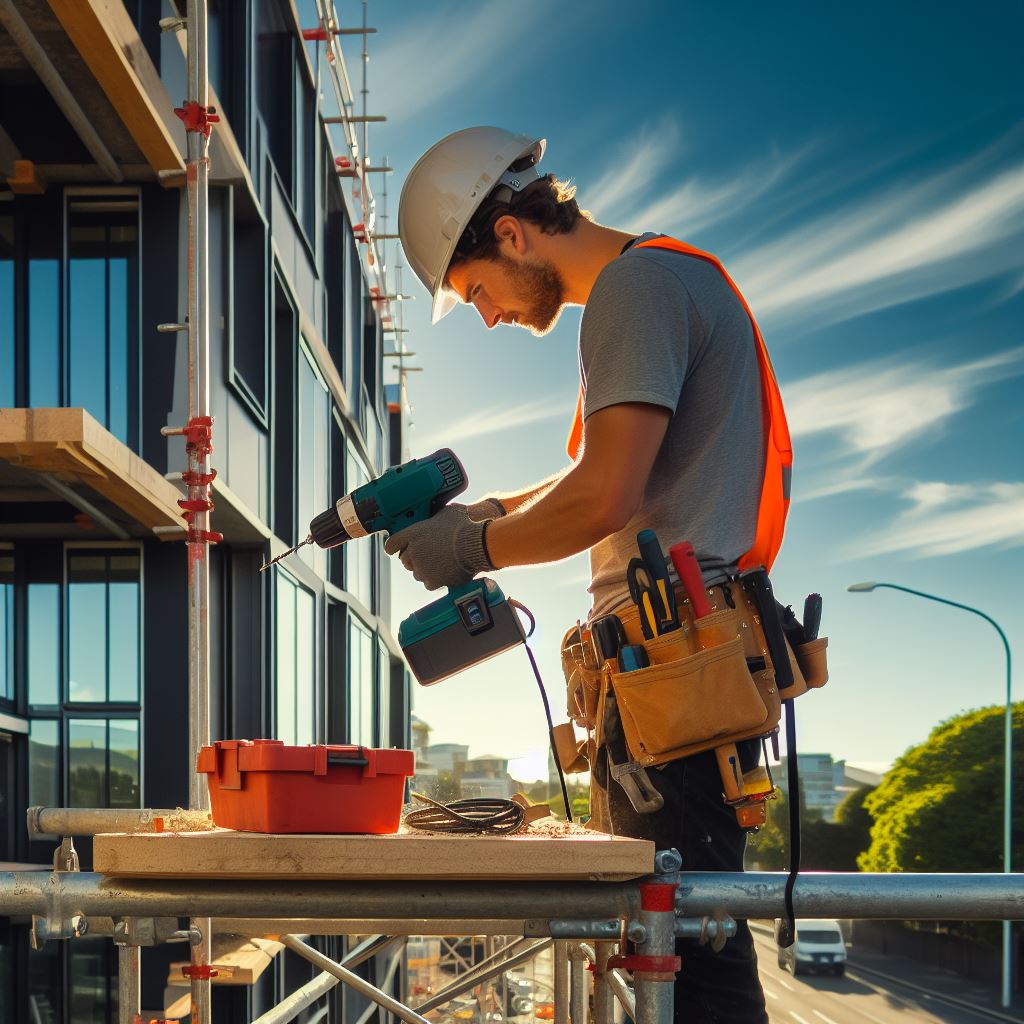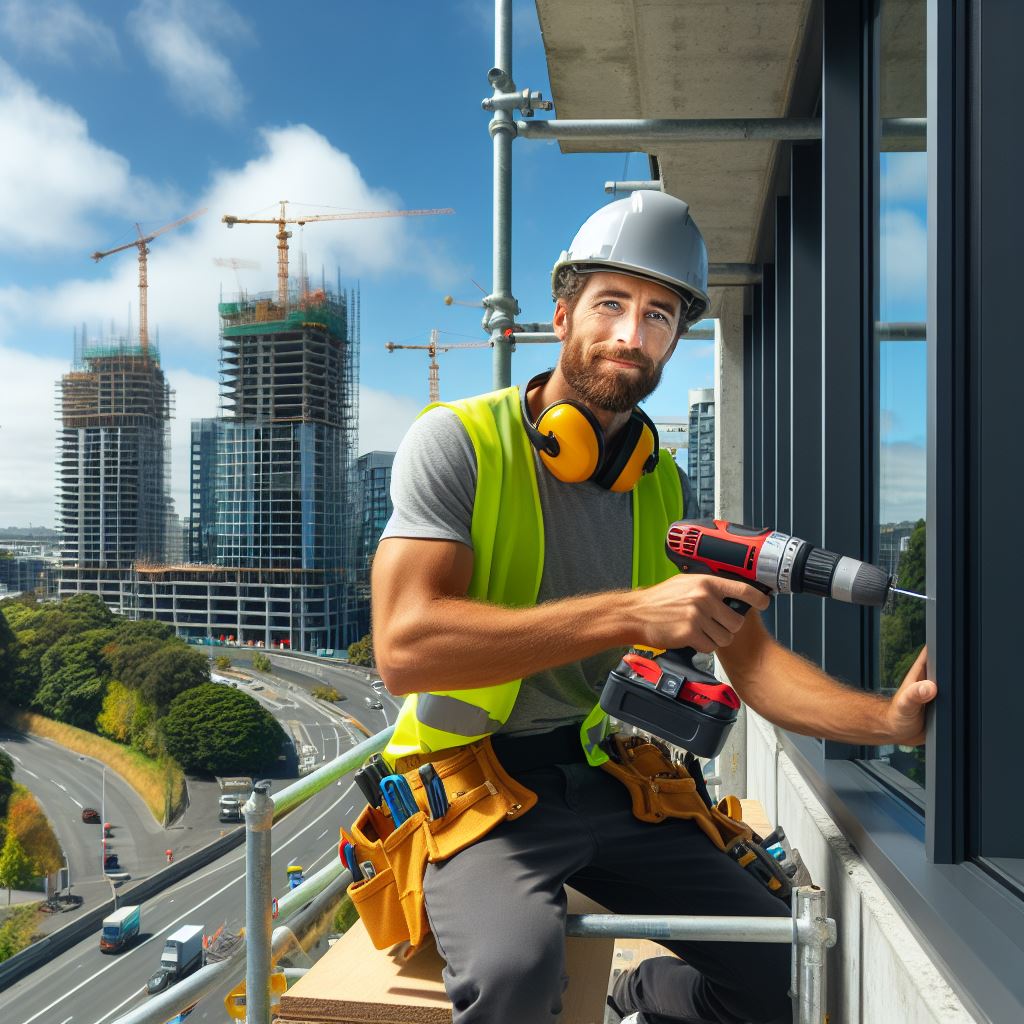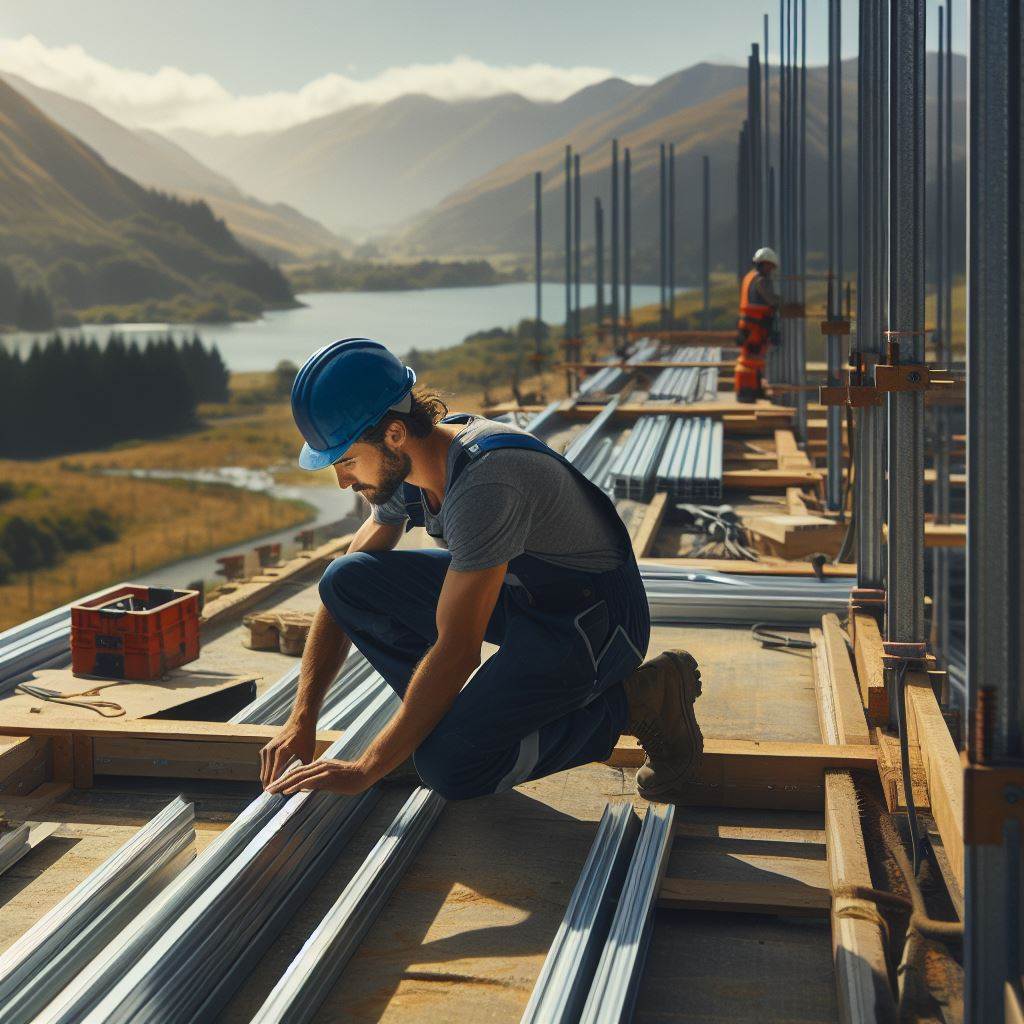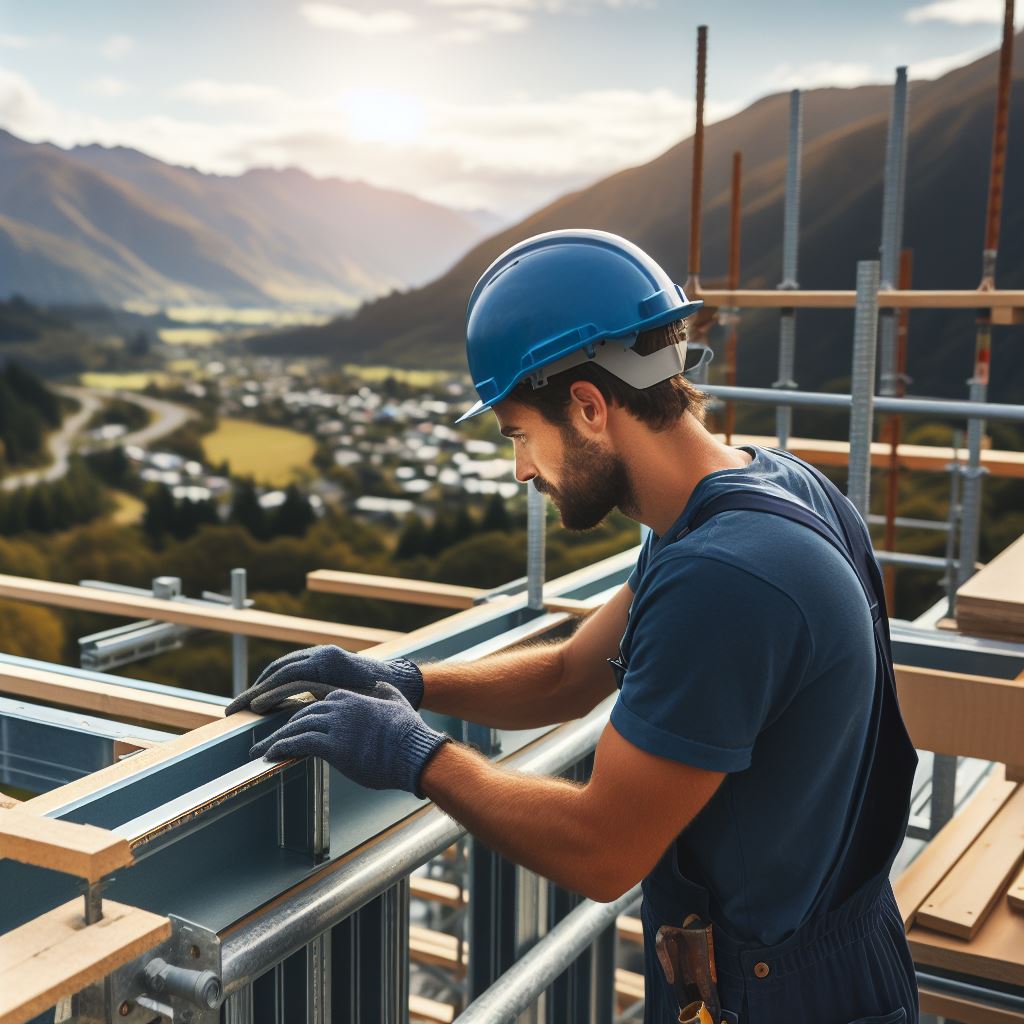Introduction
Welding and fabrication are essential careers in the New Zealand industry, playing a crucial role in construction, manufacturing, and infrastructure development.
These professions involve joining and shaping metals to create structures and products.
With the increasing demand for construction projects and the need for customized metalwork, the importance of welding and fabrication cannot be overstated. er
These career options offer promising opportunities for individuals with practical skills and a passion for craftsmanship.
In this blog section, we will delve into the world of welding and fabrication, exploring the necessary skills, industry demand, and career prospects in New Zealand.
Whether you are a young professional seeking a secure and fulfilling career or an experienced welder/fabricator looking to expand your knowledge.
This section will provide valuable insights and tips to help you navigate the industry. So, let’s dive in and uncover the exciting world of welding and fabrication in New Zealand!
Overview of Welding
Welding is a crucial process in the fabrication industry, as it is used to join two or more metal pieces together.
It involves melting the edges of the metal workpieces and adding a filler material, which then cools and solidifies, creating a strong bond.
Welding is commonly used to construct and repair structures, machinery, and vehicles.
Various types of welding techniques used in New Zealand
- Shielded Metal Arc Welding (SMAW): Also known as stick welding, it uses a consumable electrode covered in flux. It is versatile and can be used in various positions.
- Gas Metal Arc Welding (GMAW): Also called MIG (Metal Inert Gas) welding, it uses a wire electrode and a shielding gas to protect the weld from atmospheric contamination.
- Gas Tungsten Arc Welding (GTAW): Commonly known as TIG (Tungsten Inert Gas) welding, it uses a non-consumable tungsten electrode and a shielding gas. It offers precise control and is suitable for thin metals.
- Flux-Cored Arc Welding (FCAW): This technique uses a tubular wire electrode with a flux core. It is ideal for outdoor welding or in environments with strong drafts.
Skills and qualifications required to become a welder in NZ
- Technical knowledge of welding techniques, equipment, and tools.
- Proficiency in reading and interpreting technical drawings and blueprints.
- Physical dexterity and hand-eye coordination for precise welding movements.
- Understanding of safety protocols and procedures to prevent accidents and injuries.
- Completion of a welding trade course or an apprenticeship program.
- Obtaining relevant certifications, such as the New Zealand Certificate in Welding Skills.
Welding offers a range of career opportunities and growth prospects in New Zealand. As the country’s infrastructure continues to develop, there is a steady demand for qualified welders in various industries.
Potential career paths and sectors for welders include
- Construction and fabrication companies that specialize in structural steelwork and metal fabrication.
- Manufacturing industries, including automotive, aerospace, and marine, which require skilled welders for assembly and repair.
- Engineering firms that design and develop new products and machinery.
- Oil, gas, and mining sectors that rely on welders for pipeline construction, maintenance, and repairs.
- Self-employment opportunities, where experienced welders can establish their own welding businesses and serve local communities.
Moreover, welders in New Zealand have the chance to further their careers by gaining additional qualifications and certifications.
These can include advanced welding techniques, inspection and quality control, welding supervision, and teaching or mentoring roles.
In essence, welding is a vital skill in the fabrication industry, with various techniques utilized in New Zealand.
Becoming a welder requires specific skills, training, and qualifications, and offers numerous career opportunities and growth prospects as the country’s industries continue to expand.
Overview of Fabrication
Fabrication involves the creation of structures and components by cutting, bending, and assembling materials. It differs from welding, which focuses solely on joining materials.
Explanation of Fabrication
Fabrication encompasses a wide range of processes, including cutting, drilling, welding, grinding, and shaping materials to create finished products.
Different Fabrication Techniques
- Cutting: This involves using various tools like saws, plasma cutters, and laser cutting machines to remove material.
- Bending: Fabricators use tools like press brakes and tube benders to manipulate materials into desired shapes.
- Welding: While not the primary focus of fabrication, welding is often used to join components together.
- Grinding and Polishing: This helps achieve smooth and finished surfaces on fabricated materials.
- Assembly: Fabricators assemble components using fasteners, adhesives, and welding techniques.
Skills and Qualifications for Fabricators
To excel in the field of fabrication, fabricators need a combination of technical skills and qualifications:
- Technical skills: Fabricators must have proficient skills in blueprint reading, measurement, and working with various tools.
- Knowledge of materials: Fabricators should have a thorough understanding of different metals, alloys, and plastics.
- Welding expertise: While not the core focus, fabricators often need welding skills to join components.
- Health and safety: Fabricators must prioritize safety and conform to relevant regulations and best practices.
- Problem-solving abilities: Fabricators must be able to identify and troubleshoot issues that arise during fabrication.
Career Opportunities and Growth Prospects
Fabrication offers a range of career opportunities and growth prospects in New Zealand:
- Job prospects: The demand for skilled fabricators is expected to remain strong in industries like construction, manufacturing, and engineering.
- Specialization options: Fabricators can specialize in areas such as stainless steel fabrication, structural fabrication, or architectural metalwork.
- Entrepreneurship: Skilled fabricators can start their own fabrication businesses and capitalize on the demand for customized products.
- Career progression: With experience and further education, fabricators can advance to supervisory or managerial roles.
- Continuing education: Fabricators can pursue additional certifications or qualifications to enhance their skill set and career opportunities.
In a nutshell, fabrication involves the creation of structures and components through cutting, bending, and assembling materials.
Different techniques are used, and fabricators require a combination of technical skills, qualifications, and problem-solving abilities.
With a wide range of career opportunities and potential for growth, fabrication is an exciting and rewarding field in New Zealand.
Read: Electrical Code Updates 2024: What NZ Needs to Know
Comparison: Welding vs. Fabrication
When it comes to welding and fabrication, there are both similarities and differences between these two fields. Let’s take a closer look:
Similarities
- Both welding and fabrication involve working with metal to create or repair structures.
- Both require knowledge of various metal types and their properties.
- Both play a crucial role in industries like construction, manufacturing, and automotive.
- Both require attention to detail and the ability to read and interpret technical drawings.
Differences
- Welding focuses primarily on joining metal parts together using heat and a filler material.
- Fabrication involves the entire process of creating metal structures, including cutting, shaping, and assembling.
- Welding often requires specialized equipment, such as welding machines and protective gear.
- Fabrication involves using a wide range of tools and machinery, including saws, drills, and bending machines.
Required Skills, Qualifications, and Job Responsibilities
In the field of welding, professionals need to possess certain skills and qualifications:
- Proficient in various welding techniques, such as MIG, TIG, and arc welding.
- Knowledge of different types of metals and their welding requirements.
Job responsibilities in welding may include
- Preparing metal surfaces for welding.
- Operating welding equipment safely and efficiently.
- Inspecting finished welds for quality and precision.
In contrast, fabrication requires a different set of skills and qualifications
- Proficiency in cutting and shaping metal using tools like saws, shears, and cutting torches.
- Ability to read and interpret blueprints and technical drawings.
Job responsibilities in fabrication may include
- Measuring and cutting metal accurately according to specifications.
- Using various techniques, such as welding, bolting, and riveting, to assemble metal components.
- Performing quality checks to ensure structural integrity.
Pros and Cons of Choosing a Career in Welding or Fabrication
Both welding and fabrication offer unique advantages and disadvantages for aspiring professionals.
Pros of choosing a career in welding
- Can specialize in a specific welding technique.
- Opportunities to work in diverse industries.
- Potential for self-employment and flexibility.
Cons of choosing a career in welding
- Exposure to hazardous fumes, heat, and bright light.
- Physical demands and the risk of injuries.
- Fluctuating job opportunities based on industry demand and economic conditions.
Pros of choosing a career in fabrication
- Opportunity to work on various projects, from small-scale to large-scale structures.
- Can specialize in specific fabrication techniques.
- Potential for career advancement to supervisory or management roles.
Cons of choosing a career in fabrication
- Requires continuous learning and staying up-to-date with new techniques and technologies.
- Physical demands and the risk of injuries, especially when operating heavy machinery.
- Job stability may be affected by market fluctuations and competition.
Demand, Job Stability, and Earning Potential
In terms of demand and job stability, welding and fabrication both offer promising career prospects.
Personalized Career Consulting
Unlock your potential with expert career advice tailored to your goals. Get personalized guidance and actionable steps toward your dream career in New Zealand.
Get StartedWelding is in high demand in industries such as construction, pipeline, and manufacturing. Skilled welders are sought after, which can lead to job stability.
Fabrication also has a steady demand, particularly in construction and manufacturing sectors. The ability to work on diverse projects may contribute to job stability.
When it comes to earning potential, both welding and fabrication offer opportunities for competitive salaries. Skilled and experienced professionals in either field can earn higher wages.
To sum it up, while welding and fabrication have similarities, they are distinct fields with unique skills, qualifications, and job responsibilities.
Choosing between these two careers depends on individual preferences, interests, and aptitude for specific tasks.
Both fields offer job stability and earning potential, making them viable options for those seeking a career in metalworking.
Read: The Impact of Technology on NZ Electricians

Key Factors to Consider
When deciding between welding and fabrication as a career, there are several factors that need to be taken into consideration. These factors include:
Personal Interests
When considering a career in welding or fabrication, it is essential to think about your personal interests. Both fields require a passion for working with metal, but they involve different processes and tasks.
Welding involves joining metal parts together using heat and pressure, while fabrication involves creating metal structures from scratch.
Strengths and Aptitudes
Another important factor to consider is your strengths and aptitudes. Welding requires attention to detail, manual dexterity, and the ability to follow instructions accurately.
On the other hand, fabrication involves skills such as blueprint reading, design, and problem-solving. Assessing your strengths and aptitudes can help determine which career path aligns with your abilities.
Industry Trends and Demands
It’s crucial to stay updated on industry trends and demands when deciding between welding and fabrication as a career. Both fields are influenced by technological advancements and market demands.
Welding, for instance, has seen significant growth in industries such as construction, automobile, and aerospace.
Fabrication, on the other hand, is in demand for creating customized metal products in various sectors.
Personal interests, strengths, and aptitudes that align with each field
Welding
If you have a strong interest in working with your hands, precision, and enjoy problem-solving, welding may be the right career choice for you.
Welders work in various industries, including construction, manufacturing, and oil and gas. They play a crucial role in creating and repairing metal structures and equipment.
Fabrication
If you have a passion for design, creative thinking, and enjoy working on projects from start to finish, fabrication may be the ideal career path.
Fabricators work in industries such as architecture, metalworking, and furniture manufacturing. They specialize in creating custom metal products based on client specifications.
The importance of researching and understanding industry trends and demands
Researching and understanding industry trends and demands is vital when considering a career in welding or fabrication.
By staying informed, you can make informed decisions about the direction you want to take your career.
Job Opportunities
By researching industry trends and demands, you can identify the areas where job opportunities are abundant. This will help you focus your efforts and choose the right career path.
Skills Development
Industry trends can also indicate the skills that are in high demand. Continuous learning and skill development in these areas will make you a valuable asset in the job market.
Transform Your Career with a Professional CV and Cover Letter
Stand out to employers with an ATS-optimized resume and tailored cover letter designed to match your dream role. Let us craft your job application materials for success!
Get StartedSalary and Advancement
Understanding industry trends can also give you insights into salary expectations and potential for career advancement.
By focusing on industries with high demands, you can potentially earn a higher salary and have better opportunities for growth.
Essentially, when deciding between welding and fabrication as a career, it is essential to consider personal interests, strengths, and aptitudes.
Additionally, researching and understanding industry trends and demands can help make an informed decision.
By finding a career path that aligns with your passion and skills, you can embark on a rewarding journey in either welding or fabrication.
Read: Apprenticeships in Electrical Work: NZ Focus
Tips for Choosing the Right Path
- Research and understand the differences between welding and fabrication careers.
- Consider your interests, strengths, and long-term goals when deciding which path to pursue.
- Visit local trade schools or vocational programs to learn more about their welding and fabrication programs.
- Speak with professionals in the industry to gain insight into the daily tasks and challenges of each career.
- Attend career fairs and industry events to meet professionals and learn about job opportunities.
Practical Tips for Individuals Considering a Career in Welding or Fabrication
- Start by taking introductory welding or fabrication classes to see if you enjoy the work.
- Get hands-on experience through internships, apprenticeships, or part-time jobs in the industry.
- Invest in quality welding equipment and tools to enhance your skills and work efficiently.
- Stay updated with the latest welding techniques and technologies through continuous learning.
- Consider specializing in a specific type of welding or fabrication to stand out in the job market.
Importance of Apprenticeships, Training Programs, and Gaining Hands-on Experience
- Apprenticeships provide valuable on-the-job training and mentorship from experienced professionals.
- Training programs offer structured learning opportunities to acquire essential skills and knowledge.
- Hands-on experience allows you to practice and refine your skills in real-world scenarios.
- These experiences help you develop a strong foundation and increase your job prospects.
- Earning industry certifications can further enhance your credibility and job opportunities.
The Benefits of Networking, Joining Professional Organizations, and Seeking Mentorship
- Networking allows you to connect with professionals in the industry who can provide guidance and job referrals.
- Joining professional organizations provides access to workshops, seminars, and industry updates.
- Mentorship programs give you the opportunity to learn from experienced professionals and gain valuable insights.
- Networking, organizations, and mentorship can open doors to new opportunities and career advancement.
- Building relationships with industry professionals can lead to long-term professional growth.
Long-Term Growth and Advancement Opportunities in Each Field
- Welding offers a variety of career paths, including becoming a welding inspector, instructor, or supervisor.
- Fabrication allows for specialization in areas such as structural steel fabrication or metalworking.
- Both fields offer the potential for entrepreneurship and owning your own welding or fabrication business.
- Continuing education and gaining further certifications can lead to higher-paying positions and promotions.
- Consider the demand for skilled welders and fabricators in your region to ensure job stability.
Ultimately, choosing a career in welding or fabrication requires careful consideration and research.
It is important to explore apprenticeships, training programs, and gain hands-on experience before making a decision.
Networking, joining professional organizations, and seeking mentorship can also greatly benefit your career growth.
Lastly, evaluating the long-term opportunities and advancement potential in each field will help you make an informed decision on the right path for you.
Read: Residential vs Commercial: NZ Electrician Roles
Conclusion
In closing, this blog post highlighted the differences between welding and fabrication in the context of New Zealand.
We discussed how welding involves joining materials together using heat and pressure, while fabrication focuses on creating structures and components from raw materials.
We emphasized the importance of choosing a career path that aligns with one’s interests and goals.
It’s crucial to consider factors such as job prospects, salary, and personal satisfaction when making such decisions.
As we explored the welding and fabrication industry in New Zealand, we discovered the numerous opportunities available in this field.
The country’s growing construction and infrastructure sectors offer promising prospects for individuals interested in pursuing a career in welding or fabrication.
We encourage our readers to consider exploring the welding and fabrication industry further as viable career options.
By gaining the necessary skills and knowledge, individuals can thrive in this dynamic and rewarding field.
It is essential to research available training programs and apprenticeships to kickstart a successful career in welding or fabrication in New Zealand.
By doing so, individuals can secure a prosperous future aligned with their interests and aspirations.




